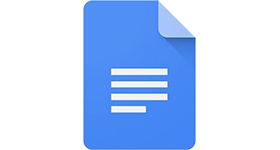Flipgrid is a free platform that allows you to customize your environment to fit the needs of your learners. All you need is a little imagination, a little tech, and sound pedagogy to leverage Flipgrid in a way that will surely empower your learners! Flipgrid works on all devices and browsers so you are not bogged down with a particular platform or device to have meaningful access.
Flipgrid is not “just a video platform”. It’s so much more than that. Flipgrid invites both teachers and learners to think creatively. Teachers have the flexibility to limit the time to record a response, encourage student collaboration through peer feedback (which can be in the form of a star or a video comment). Furthermore, Flipgrid also allows teachers to be flexible with asynchronous learning. No matter the environment or the timeframe, leveraging Flipgrid in any classroom model will sure to boost learner engagement.
Teaching with FlipGrid
Teaching tips:
Before Getting started with Flipgrid, there are some things that educators need to take into consideration:
- Before you introduce a tool, you MUST teach your learners to use the tool.
- Allow learners to experiment with the tool and collaboratively brainstorm ways to use the tool including accessibility features.
- Establish parameters of using the tool that are developed collaboratively.
Through the Lens of SETT
As an assistive technology practitioner, it is commonplace to use the SETT Framework (Zabala, 2020) in the evaluation process on an individual basis. However, what if we took the SETT and looked at the ways to leverage Flipgrid through that lens for a variety of learners? Below is a template that can help teams brainstorm the many ways to leverage Flipgrid:

In other words, think of it this way- look at the student and the nature of their disability. What barriers are present in the delivery of content that prevents the learner to adequately access, engage, and express in the learning process? Use the SETT and RE-SETT to help teams figure out the barriers, tasks, tools, and how the environment supports or exacerbates these.
Design with disAbility FIRST
One of the great features in Flipgrid is its accessibility. Flipgrid is committed to ensuring that their platform is accessible to all learners. From editable closed captions to Immersive Reader Integration to XBox Controller integration, Flipgrid is striving to be a tool that is perceivable, operational, understandable, and robust in not only its design, but its use. This bodes well for learners with learning disabilities and other variances. We all know that there is more than one way to access, engage, and express in the learning environment. Flipgrid allows for multiple ways to engage learners, for learners to have options to create video content that is personalized, and for learners to show what they know when more traditional methods of assessment serve as barriers to learning. When we are designing with disAbility in mind first, and leverage technology tools such as Flipgird, we are providing pathways to learning that are flexible and honor the variability that lies in all of us.
Take it further- Ideas for Inclusive Instruction:
- Classroom Community Building in ANY environment.
- Read a Loud with asynchronous response to target question/prompt
- Screen recording of mathematical processes, writing, art, virtual whiteboard
- Fluency training in reading aloud text
- Articulation training
- Technology tutorials
A Note From The Field
During Emergency Distance Learning, our district leveraged Flipgrid as a way to foster community and collaboration where video conferencing was not an option. In the words of a 4th grade classroom teacher who switched their read alouds to Flipgrid, where they saw increases in learner engagement, especially with learners with IEPs, who, under more traditional circumstances, struggled with accessing grade level content, “Flipgrid allowed kids who normally didn’t have a voice to find that Flipgrid was fun! And some of the kids really played with it and loved it. Great technology!” In another scenario, a multi-grade teacher leveraged Flipgrid to continue the classroom community where learners practiced social response skills related to the scenario the teacher posted, which helped to continue progress on IEP goals. These simple pivots helped to break barriers to learning in the traditional classroom environment, and both educators reported that they will continue to use Flipgrid no matter the iteration of school.
In our current reality in education, it is important for educators and learners to be able to pivot at potentially a moment’s notice. Having content posted online is one way to ensure that no matter the learning environment, learners will be able to access, engage and express in the way that makes sense for them. Leveraging Flipgrid helps to adjust the pivot point so that no matter the environment, learners are engaged.




